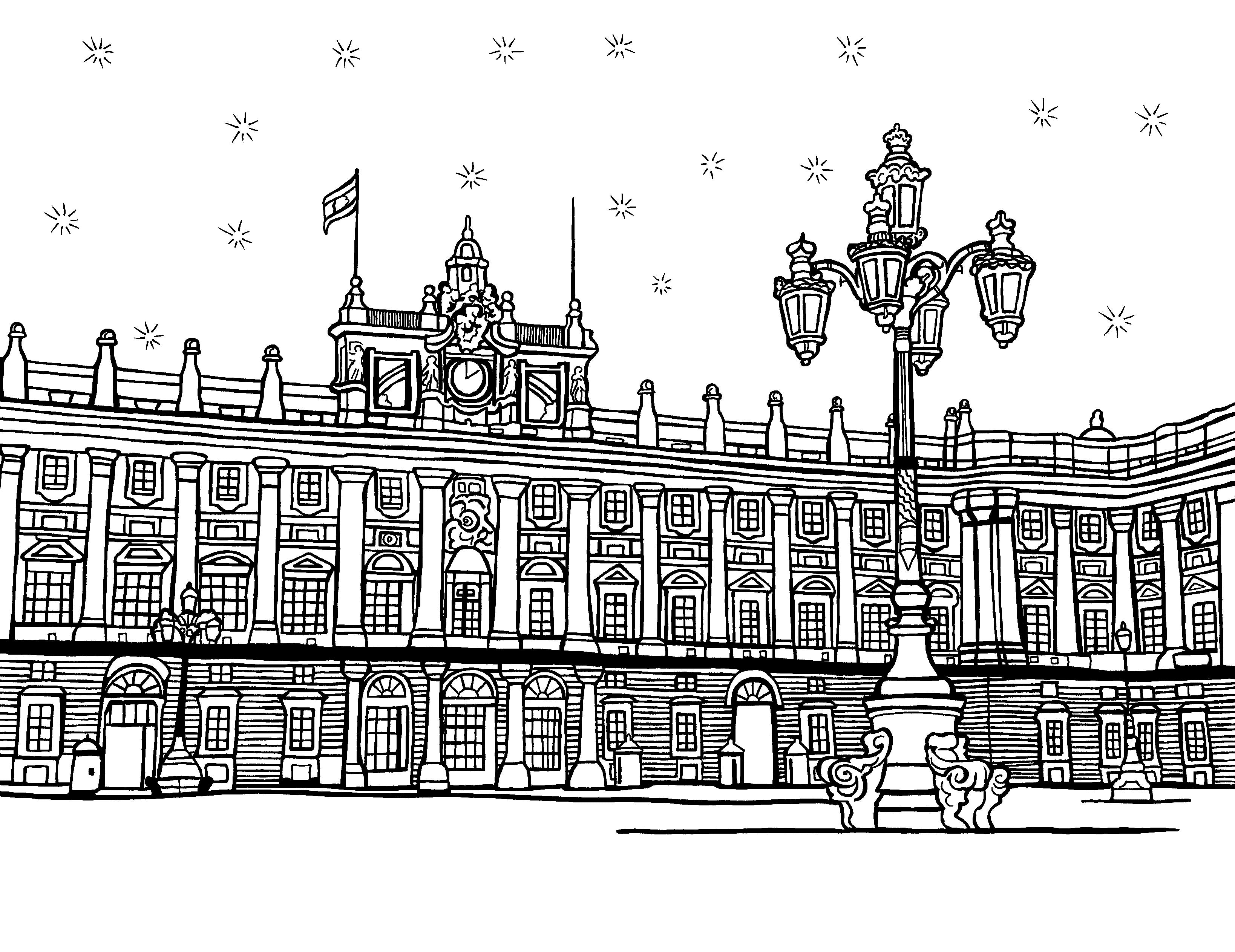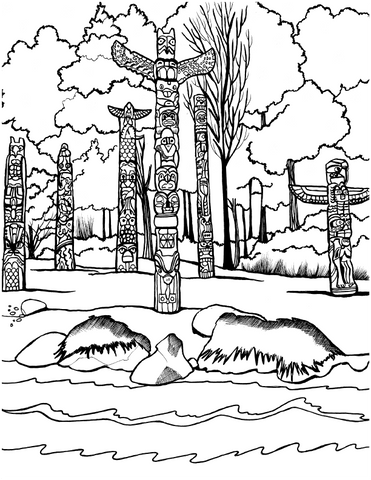

Royal Palace of Madrid - Free Coloring Page
he Royal Palace
The Royal Palace of Madrid is not only the official residence of the Spanish Royal Family but also a monumental symbol of history and culture in Spain. What's special about this majestic palace is its sheer scale; with over 3,418 rooms, it's the largest royal palace in Europe by floor area. The palace is renowned for its stunning architecture, luxurious interiors, and significant art collections, reflecting the grandeur and tastes of Spain's royal history.Did you know?
An intriguing fact about the Royal Palace of Madrid is that it houses a world-class string instrument collection, including violins, violas, and cellos by the legendary Antonio Stradivari. This collection is unique and priceless, reflecting the royal family's long-standing patronage of the arts and music. It's a harmonious blend of royal legacy and musical excellence that few are aware of.If you would like to know more about this beautiful spanish royal residence, please read on. Being the largest royal palace in Europe. Remember that it contains a unique Stradivari Collection. Or you can check out our coloring books here!
Nestled in the heart of Spain's vibrant capital, this Madrid landmark stands as a testament to the grandeur and history of Spanish royalty. With its expansive 135,000 square meters (1,450,000 square feet) and an impressive tally of 3,418 rooms, it reigns as the largest functioning royal palace in Europe by square footage, offering visitors a glimpse into the continent's most lavish royal abode.
While it serves as the official residence of the Spanish royal family, King Felipe VI opts for the more modest Palace of Zarzuela as his living quarters. Nevertheless, the Royal Palace of Madrid remains a key site for state ceremonies and is generously open to the public for exploration.
The palace's exterior commands attention, but its interior is where the true marvels lie. It houses an exquisite collection of artworks, décor, and furnishings crafted from mahogany, Spanish marble, stucco, and other precious materials, showcasing contributions from some of Spain's greatest artists.
Among its many wonders, the Grand Staircase stands out with its ceiling frescoes, flanked by two lions and adorned with a statue of Charles III in a Roman toga, while its corners celebrate the four elements: water, fire, earth, and air. The Throne Room, the palace's crown jewel, dazzles visitors with its opulent paintings, expansive mirrors, and sumptuous furnishings. Not to be missed is the Hall of Columns, featuring a magnificent ceiling fresco by Giaquinto, complemented by Parisian chandeliers dating back to 1846.
Additional must-see areas include the Antechamber of Charles III, the Royal Armory, and the palace's stunning external features: the Plaza de Oriente, the Palace Gardens, and the Sabatini Gardens. Each offers a unique perspective on the palace's architectural and historical significance, making the Royal Palace of Madrid a must-visit for anyone interested in the splendor of Spain's royal heritage.
À la Découverte du Majestueux Palais Royal de Madrid, Espagne
Niché au cœur de la capitale vibrante de l'Espagne, le Palais Royal de Madrid se dresse comme un témoignage de la grandeur et de l'histoire de la royauté espagnole. Avec ses vastes 135 000 mètres carrés (1 450 000 pieds carrés) et un impressionnant total de 3 418 pièces, il règne comme le plus grand palais royal en fonction en Europe par sa superficie, offrant aux visiteurs un aperçu de la demeure royale la plus somptueuse du continent.
Bien qu'il serve de résidence officielle à la famille royale espagnole, le Roi Felipe VI préfère le Palais de la Zarzuela pour ses quartiers d'habitation. Néanmoins, le Palais Royal de Madrid reste un lieu clé pour les cérémonies d'État et est généreusement ouvert au public pour exploration.
L'extérieur du palais commande l'attention, mais c'est son intérieur qui renferme les véritables merveilles. Il abrite une collection exquise d'œuvres d'art, de décorations et de meubles fabriqués à partir d'acajou, de marbre espagnol, de stuc et d'autres matériaux précieux, mettant en évidence les contributions de certains des plus grands artistes d'Espagne.
Parmi ses nombreuses merveilles, l'Escalier Principal se distingue avec ses fresques au plafond, flanqué de deux lions et orné d'une statue de Charles III en toge romaine, tandis que ses coins célèbrent les quatre éléments : l'eau, le feu, la terre et l'air. La Salle du Trône, joyau de la couronne du palais, éblouit les visiteurs avec ses peintures opulentes, ses miroirs expansifs et ses meubles somptueux. À ne pas manquer, la Salle des Colonnes, présentant une fresque magnifique au plafond de Giaquinto, complétée par des lustres parisiens datant de 1846.
Les zones à voir absolument incluent l'Antichambre de Charles III, l'Armurerie Royale, et les caractéristiques extérieures stupéfiantes du palais : la Plaza de Oriente, les Jardins du Palais et les Jardins de Sabatini




